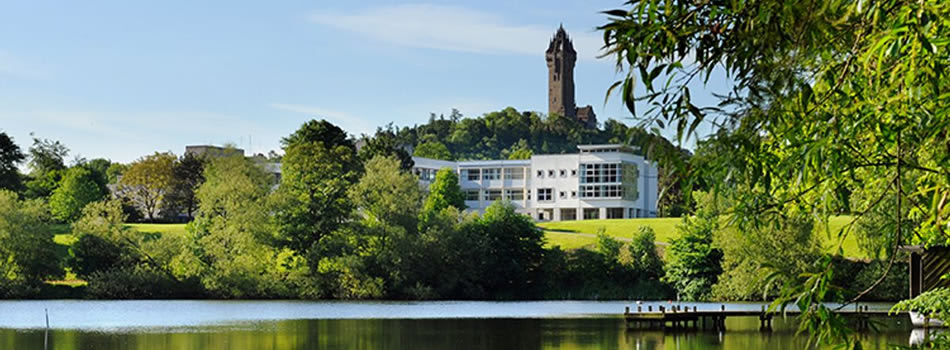Rewilding is increasingly considered as a powerful tool to limit both the ongoing declines in biodiversity and mitigate climate change, through its potential to restore biodiverse habitats and increase ecosystem-scale carbon (C) storage. In Scotland, where ca. seven million sheep and one million deer graze the land predator-free and prevent the natural regeneration of trees, the removal of these large herbivores through fencing has allowed natural forest regeneration in several small-scale experiments (see below). The visual success of these initiatives has been embraced by the rewilding conservation movement and has led to increasingly vocal calls to ‘rewild’ the Scottish Highlands. Rewilding initiatives often infer that there will be wider holistic benefits (e.g., Warner et al. 2021), however, confidence in the true benefits of rewilding, particularly biodiversity recovery and C sequestration, is limited due to a lack of above and belowground data.
While these rewilding initiatives likely increase above ground carbon storage by allowing tree growth, the overall change in ecosystem C storage also depends on the response of the largest C stock in terrestrial ecosystems: the soil C stock. Recent findings from experimental tree planting in the Scottish uplands suggests that while tree planting led to an accumulation of C aboveground, it simultaneously led to decrease in C sequestration belowground (Friggens et al. 2020), thereby cancelling out the aboveground benefits. Preliminary data from a rewilding initiative at Ben Lawers Nature reserve suggest that this decrease in soil C may also occur following the natural regeneration of trees. Furthermore, soils are globally the largest reservoir of biodiversity, hosting more than 25% of the Planet’s total biodiversity (Bardgett and van der Putten (2014). Holistic benefits of rewilding on biodiversity thus largely depend on the response of the soil. There is thus an urgent need to carefully considering the response of the soil to rewilding. Can rewilding the Scottish Highlands increase ecosystem-scale carbon storage and biodiversity, once the soil is considered?
The overall aim of this PhD is to evaluate the carbon and biodiversity benefits of rewilding across a network of rewilding initiatives across Scotland, through a focus on soils and its interactions to the surrounding environment. Specifically, through field sampling and laboratory analyses, this PhD will answer the following questions:
1. How does the amount and stability of soil C respond to rewilding?
2. How does the diversity of soil organisms respond to rewilding?
3. What are the overall ecosystem-scale C benefits, when considering the soil, aboveground, and freshwater compartments?
To answer these questions, the PhD student will select a network of rewilding sites across the Scottish Highlands in collaboration with from Forest Research, where they will use a range of field sampling techniques followed by complementary laboratory experimentation and analyses:
– First, to determine the response of soil carbon to rewilding, soil samples will be collected inside and outside the rewilding areas and analysed to determine the soil C stocks throughout the soil profile, and the form in which the C is stored (dissolved, mineral-associated or particulate organic matter) to inform on C stability, along with standard soil parameters. Further, to determine the response of important soil functions to rewilding, soil cores from paired sites will be incubated under laboratory conditions to measure soil C stability and soil greenhouse gas emission potential.
– Second, to determine the response of soil organisms to rewilding, soil samples will be collected seasonally for one year, inside and outside the rewilding areas, and microorganisms and invertebrates will then be extracted and identified.
– Last, to determine the overall ecosystem-scale C, the response of aboveground plant biomass and freshwater carbon will be measured.
Project Timeline
Year 1
– Review of literature (Questions 1-3)
– Training on field, lab and analytical methods (Questions 1-3)
– Establishment of network of rewilded sites with paired control sites across the Scottish Highlands, and recording of site-specific characteristics as covariates (e.g., soil type, past land-use, topography) (Questions 1-3)
– Field sampling of soils for soil carbon analyses, and estimation of aboveground plant biomass, in collaboration with CASE partner Forest Research (FR) (Questions 1 and 3)
– Soil characterisation at Stirling and UKCEH Lancaster (Question 1)
Year 2
– Set up of soil incubations at Stirling and UKCEH Lancaster (Question 1)
– Seasonal field sampling of soils for soil community determination (microorganisms and invertebrates), combined with seasonal freshwater sampling (Questions 2-3)
– Presentation of key result at national/international conference (Question 1)
– Analysis of data and paper writing (Question 1)
– Further statistical training (Questions 1-3)
Year 3
– Extraction and identification of soil invertebrates with CASE partner FR (Question 2)
– Extraction and determination of soil microorganisms at UKCEH Lancaster (Question 2)
– Analysis of data and paper writing (Question 2)
Year 3.5
– Analysis of data and paper/thesis writing Questions 1-3)
– Presentation of key result at national/international conference (Question 1-3)
The application deadline is Friday 6th January 2023 at 12:00 noon. By this time applicants must have submitted an application through the IAPETUS DTP online application system (open from 1st November 2022) further details are here: https://www.iapetus2.ac.uk/how-to-apply/. However, serious applicants should contact the lead supervisor by email well before the deadline to discuss their application.
Initial shortlisting will take place immediately after the 6th January deadline. Those candidates who are successful in shortlisting will be required to attend an IAPETUS interview on Tuesday 28th February or Wednesday 1st March 2023.
UKRI eligibility rules enable a small proportion of IAPETUS PhD studentships to be awarded to non-UK applicants from overseas and for successful international candidates we will apply to Stirling University to waive overseas fee costs; applicants from overseas should contact the lead supervisor to discuss this.

 Continue with Facebook
Continue with Facebook





